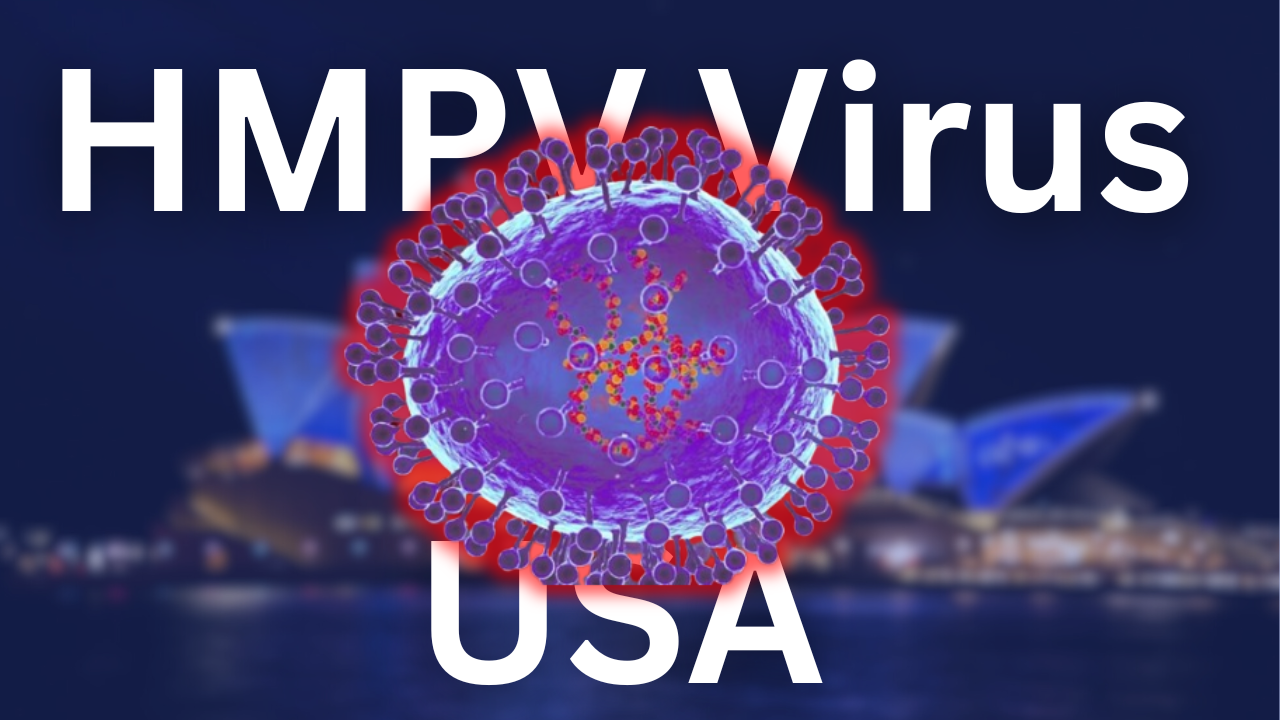The Human Metapneumovirus (HMPV virus) has become a growing concern in USA due to its significant impact on public health. Known for causing respiratory illnesses, the HMPV virus primarily affects vulnerable populations such as children, the elderly, and those with weakened immune systems. This article delves into the prevalence of the HMPV virus in USA, its symptoms, precautions, and more.
Understanding the HMPV Virus in USA
The HMPV virus is a respiratory pathogen first identified in 2001. It is part of the Paramyxoviridae family, similar to viruses like RSV (Respiratory Syncytial Virus) and Influenza. In USA, the virus is most active during late winter and early spring, coinciding with flu season. Increased awareness and improved diagnostic tools have brought attention to the prevalence of the HMPV virus in USA.
| SN | Globally HMPV Virus Cases |
|---|---|
| 1 | HMPV Virus in USA |
| 2 | HMPV Virus in Mexico |
| 3 | HMPV Virus in Australia |
| 4 | HMPV Virus in India |
| 5 |
Symptoms of the HMPV Virus
Symptoms of the HMPV virus can vary from mild to severe, often resembling those of the flu or common cold. Common symptoms include:
- Fever: One of the most noticeable early signs.
- Cough: Persistent coughing that can be dry or productive.
- Runny Nose: Nasal congestion or discharge is typical.
- Shortness of Breath: A sign of more severe infection.
- Fatigue: Generalized weakness and tiredness.
- Wheezing: Common in children and individuals with respiratory conditions.
Severe cases of the HMPV virus in USA have led to complications like pneumonia and bronchitis, particularly among high-risk groups.
HMPV Virus in Children
In the USA, children are among the most affected by the HMPV virus. It is one of the leading causes of respiratory illnesses in children under five years old. Symptoms in children often include high fever, wheezing, and rapid breathing. Hospitalization may be required for severe cases, particularly when respiratory distress occurs.
HMPV Virus in Elderly Populations
The elderly are another high-risk group for the HMPV virus in USA. Aging weakens the immune system, making it harder to fight off infections. In severe cases, the virus can lead to pneumonia or exacerbate existing conditions like COPD or asthma. Preventive measures are critical for this demographic.
Is the HMPV Virus in USA a Serious Concern?
The HMPV virus can range from mild to severe. While many cases resolve on their own, certain populations face higher risks of complications. These include:
- Young Children: Particularly those under two years old.
- Elderly Individuals: Those aged 65 and older.
- Immunocompromised People: Including individuals undergoing cancer treatments or living with chronic illnesses.
Healthcare providers in USA are emphasizing early detection and proper management of HMPV to prevent severe outcomes.
Precautions Against the HMPV Virus in USA
Preventing the spread of the HMPV virus in USA requires a combination of personal and public health measures:
- Practice Good Hygiene: Regularly wash hands with soap and water for at least 20 seconds.
- Avoid Close Contact: Stay away from individuals showing symptoms of respiratory illness.
- Use Masks: Wear masks in crowded places or during flu season.
- Disinfect Surfaces: Regularly clean frequently-touched surfaces.
- Stay Informed: Follow updates from public health authorities about HMPV cases in USA.
Diagnosing and Managing the HMPV Virus
Diagnosis of the HMPV virus in USA is typically done using laboratory tests such as PCR (Polymerase Chain Reaction). Early detection is key to preventing complications. Treatment focuses on symptom management, as there is no specific antiviral therapy for HMPV. Common approaches include:
- Hydration: Maintaining adequate fluid intake.
- Fever Management: Using medications like acetaminophen or ibuprofen.
- Rest: Allowing the body time to recover.
- Hospital Care: For severe cases, oxygen therapy or intensive care may be necessary.
FAQs About the HMPV Virus in USA
Who is most at risk for the HMPV virus in USA?
Children, older adults, and those with weakened immune systems are at higher risk of severe illness from HMPV. These groups should take extra precautions.
Is the HMPV virus seasonal in USA?
Yes, HMPV infections are most common during late winter and early spring. Seasonal patterns resemble other respiratory viruses like the flu.
What are the common symptoms of the HMPV virus?
Symptoms include fever, cough, runny nose, shortness of breath, and fatigue. In severe cases, it can lead to wheezing or difficulty breathing.
Is there a vaccine for the HMPV virus?
No, a vaccine for HMPV is not yet available. Preventive measures focus on hygiene and avoiding contact with infected individuals.
How long do symptoms of the HMPV virus last?
Most symptoms resolve within 5 to 10 days. However, recovery may take longer in severe cases or high-risk individuals.
Can adults get the HMPV virus?
Yes, adults can contract HMPV, though symptoms are typically milder compared to children or elderly individuals.
What should I do if I suspect HMPV?
Seek medical advice, especially if symptoms are severe or persist beyond 10 days. Early care can help prevent complications.
Can the HMPV virus cause pneumonia?
Yes, HMPV can cause pneumonia, particularly in children, older adults, or those with preexisting health conditions.
Conclusion
The HMPV virus in USA is a growing concern, particularly during its peak seasons. While it poses a higher risk to children, the elderly, and immunocompromised individuals, understanding its symptoms and taking appropriate precautions can help mitigate its impact. Public health efforts, combined with personal responsibility, are essential to controlling the spread of the HMPV virus in USA.
